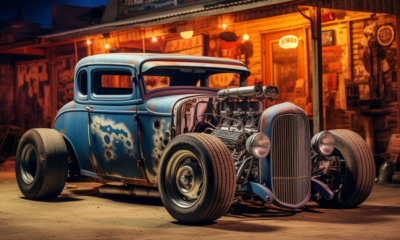Rat Rod Builds
What Cars Make Good Rat Rods
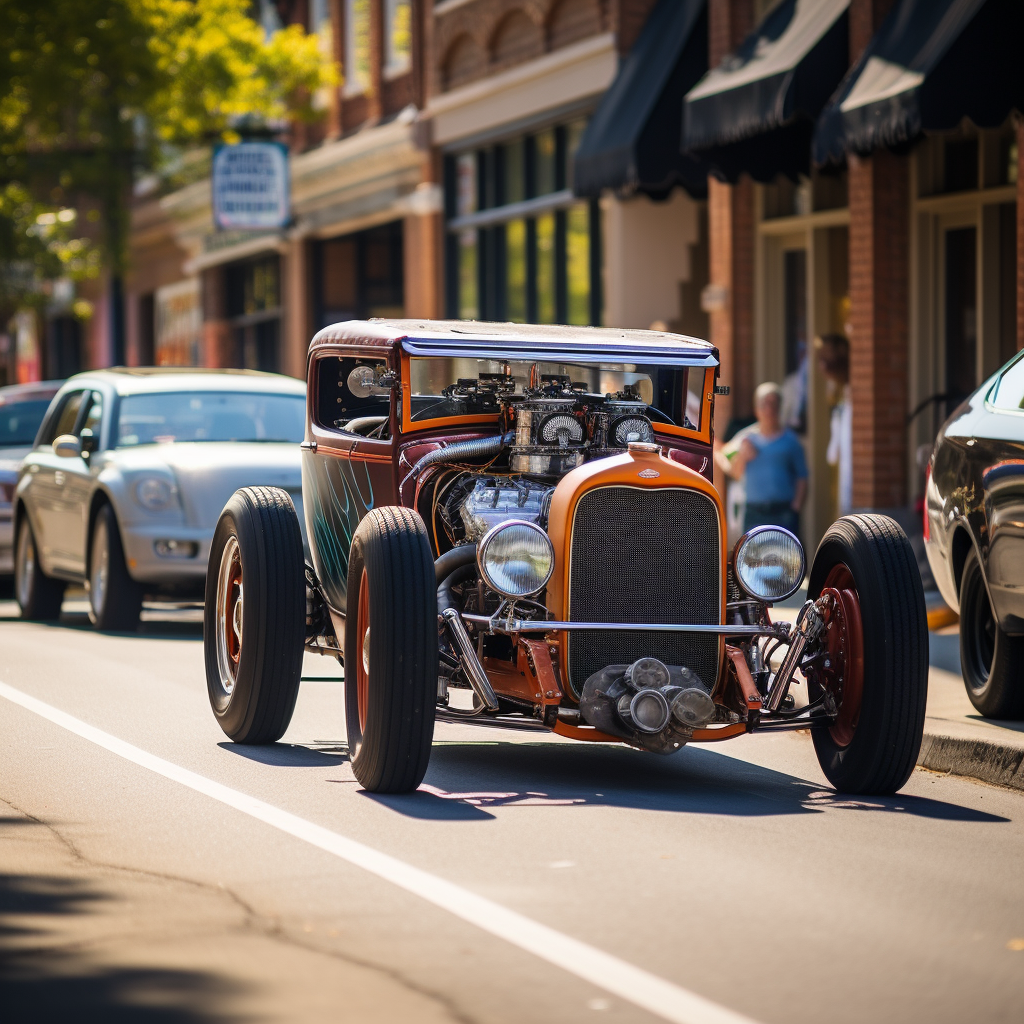
Introduction to Rat Rods
History of Rat Rods
Rat rods emerged from the post-war hot rod culture in America, carving out a distinct identity that resonated with classic car enthusiasts looking to create something truly their own. Unlike hot rods, which emphasize speed and polished aesthetics, rat rods celebrate the imperfect, the aged, and the recycled. They are stripped-down versions of old cars, their bodies lowered over wide, white-wall tires, often with the roof chopped for a streamlined look. Each rat rod is a rolling testament to the skills and vision of its creator, offering a bold statement about disregarding traditional norms and conventions.
Essential Features of Rat Rods
Aesthetic Appeal
Rusty and Weathered
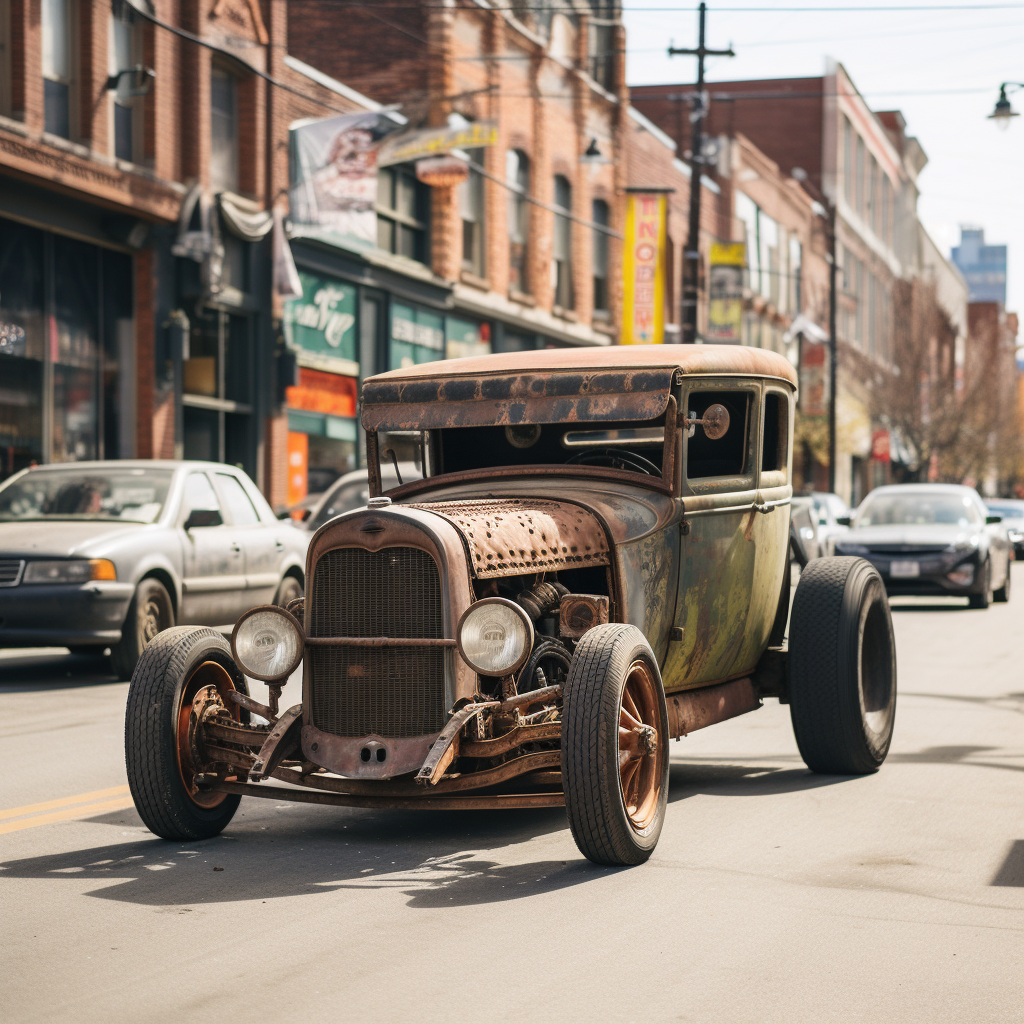
The character of a rat rod is etched in every bit of its patina, rust, and wear. This is a far cry from the gleaming history. Each dent, scratch, and rust patch tells a story and is a proud badge of honor on a rat rod.
Vintage and Distinct
Rat rods are undeniably distinct. They are rolling works of art that capture attention wherever they go. The cars used to build rat rods are usually models from the pre-1960s, chosen for their unique lines and the feeling of nostalgia they evoke. Unlike many classic cars that have been restored to their factory condition, rat rods are customized to reflect the builder’s individual style, often featuring an eclectic mix of parts from different makes and models.
Best Cars for Rat Rods
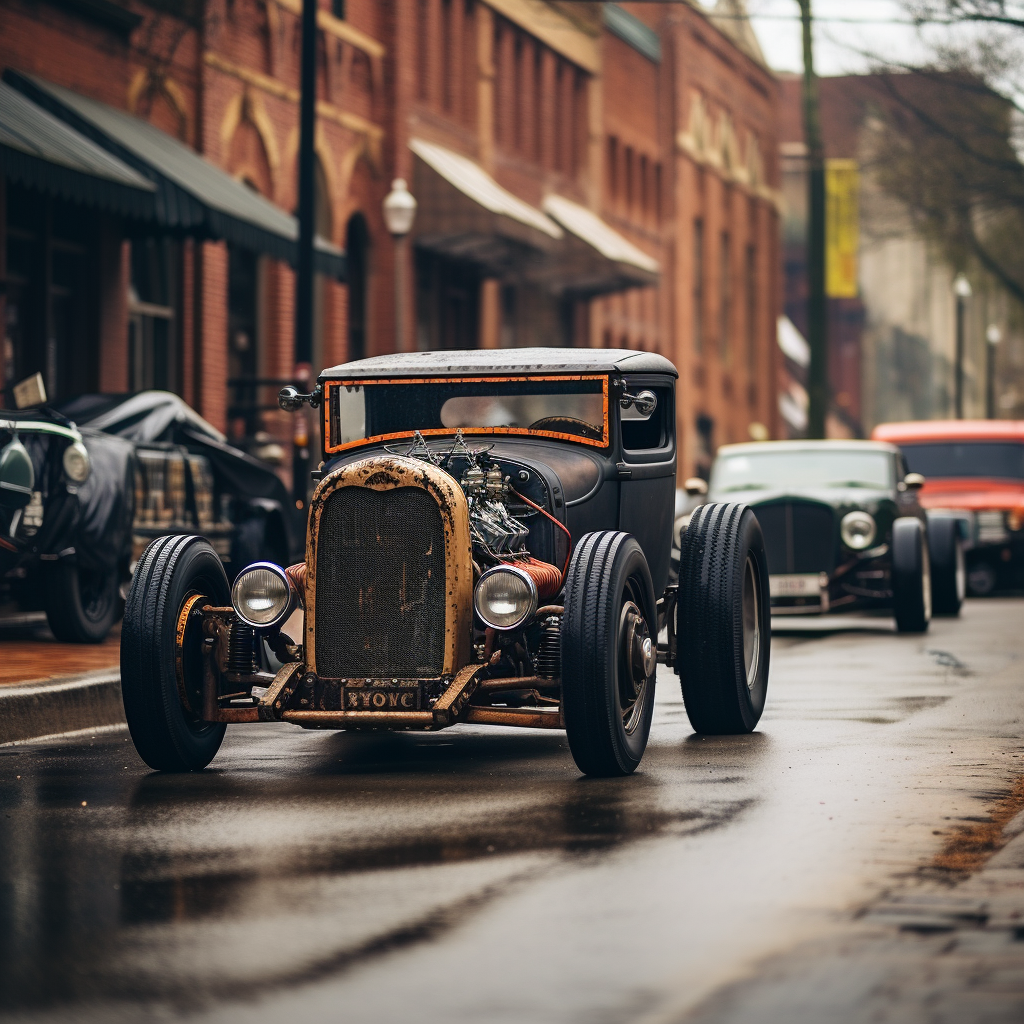
1930s Ford Models
Model A
The Ford Model A is a firm favorite in the rat rod scene. Its production run from 1927 to 1931 ensures there are still plenty of these cars around, often at affordable prices. Its distinct shape lends itself well to the typical rat rod look, and the wide range of aftermarket parts available makes it an ideal platform for customization. A rat rod built from a Model A is a classic choice and pays homage to the roots of hot rodding.
Model T
The Model T is another beloved Ford for rat rod conversions. Produced between 1908 and 1927, the Model T is an icon of the American automobile industry and a symbol of the country’s innovation during the early part of the 20th century. Its distinctive, vintage silhouette serves as an excellent foundation for a rat rod build, celebrating the past while creating something new and exciting.
1940s to 1950s Chevys
Chevrolet models from the 1940s and 50s also make excellent candidates for rat rods. Chevy’s of this era, such as the 3100 pickup, Fleetline, and Bel Air, offer a range of body styles that are ripe for customization. Their curvaceous body lines, distinctive grilles, and classic styling cues add to their appeal and make them a popular choice for those looking to build a standout rat rod.
Customizing Your Rat Rod
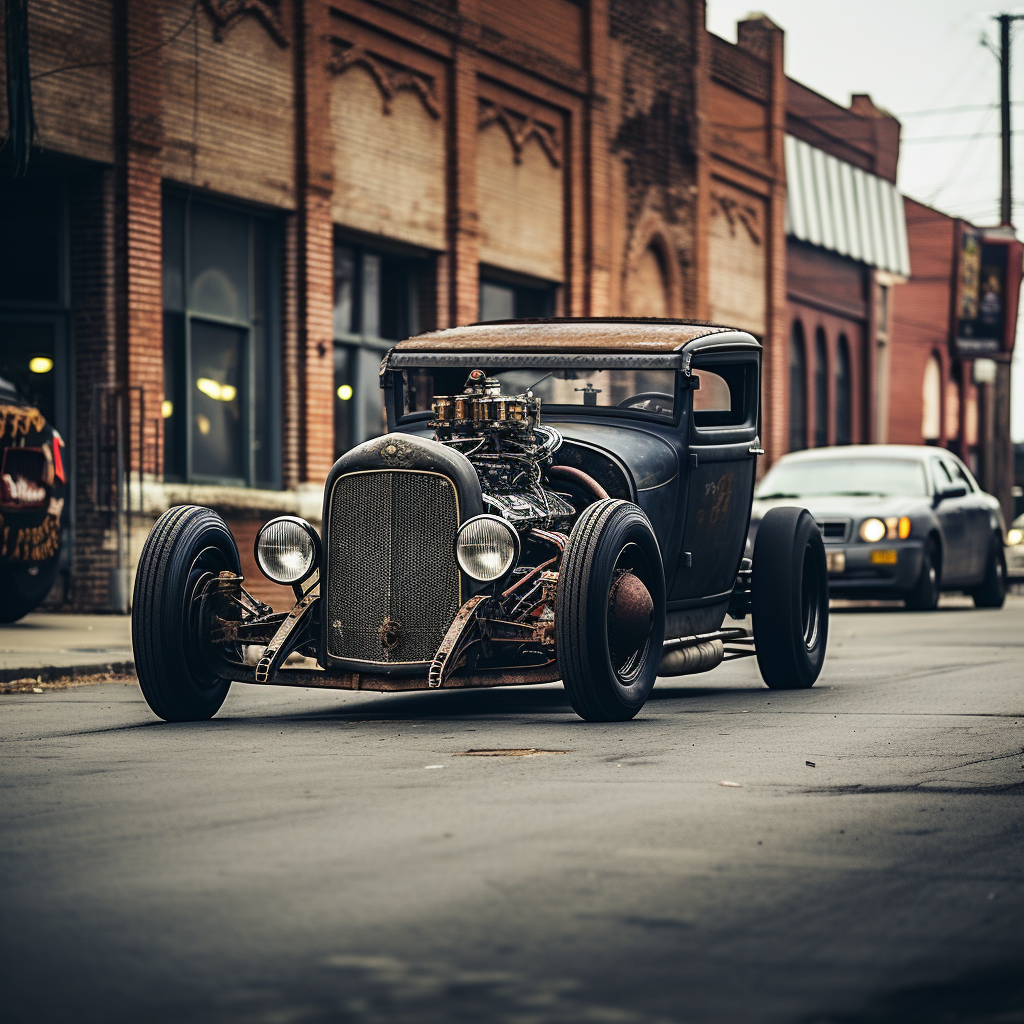
Rat rod customization is a form of automotive self-expression. While some builders choose to let their car’s original patina tell its story, others see the rusted metal as a blank canvas. Vintage signage, artistically-done welds, unconventional parts – there are no rules in rat rod customization. Everything from vintage Coca-Cola coolers to old farm equipment can find a new purpose in a rat rod build.
The Rat Rod Community
The rat rod community is as diverse as the cars themselves. It is a blend of backyard builders, professional car shops, and everyone in between. This is a community bound together by a shared passion for old-school cool and a do-it-yourself ethos. Whether it’s at car shows, swap meets, or on internet forums, rat rod enthusiasts gather to showcase their latest builds, share knowledge, and celebrate the love of all things automotive.
Conclusion
Rat rods are a testament to the individuality and inventiveness of their builders. They stand as a distinct subculture within the broader automotive world, one that values authenticity, history, and the pure enjoyment of creating something unique. Whether you start with a 1930s Ford Model A, a Model T, or a mid-century Chevy, the best rat rod is one that reflects your personality and spirit. Rat rodding isn’t just about building a car—it’s about celebrating creativity and expressing your own unique vision on four wheels.
FAQs
- What is a Rat Rod? A Rat Rod is a style of hot rod or custom car that imitates the early hot rods of the 1940s-1960s. They’re not meant to be perfect; they’re about displaying the worn-out, rough edges and the raw mechanics.
- Why are they called Rat Rods? The term “rat rod” is believed to be a nod to the scrappy, DIY nature of these cars. They’re built to be driven, not just shown off, much like a “rat bike,” a term used for a motorcycle that is kept running through improvisation.
- What makes a good base for a Rat Rod? Pre-1960s cars make good bases for rat rods due to their distinct shapes, and the relative abundance of parts. Popular models include the Ford Model A, Ford Model T, and Chevys from the 1940s and 1950s.
- Are Rat Rods safe? While rat rods often have a raw, unfinished look, they must still be built to be roadworthy. This includes having functioning safety equipment like brakes and lights. However, like any custom vehicle, the safety of a rat rod largely depends on the knowledge and skill of the builder.
- How much does it cost to build a Rat Rod? The cost to build a rat rod can vary greatly, depending on the starting vehicle, the desired modifications, and the builder’s ability to source parts and do the work themselves. Some builds can be done for as little as a few thousand dollars, while others can cost tens of thousands. The value in a rat rod is less about the money spent and more about the creativity and labor that goes into it.
As you embark on your rat rod journey, remember that the perfect rat rod doesn’t have to be an expensive endeavor. What truly matters is the passion, creativity, and dedication you pour into your project. Happy building!
Rat Rod Builds
Master Guide: How to Do a Rat Rod Paint Job Like a Pro
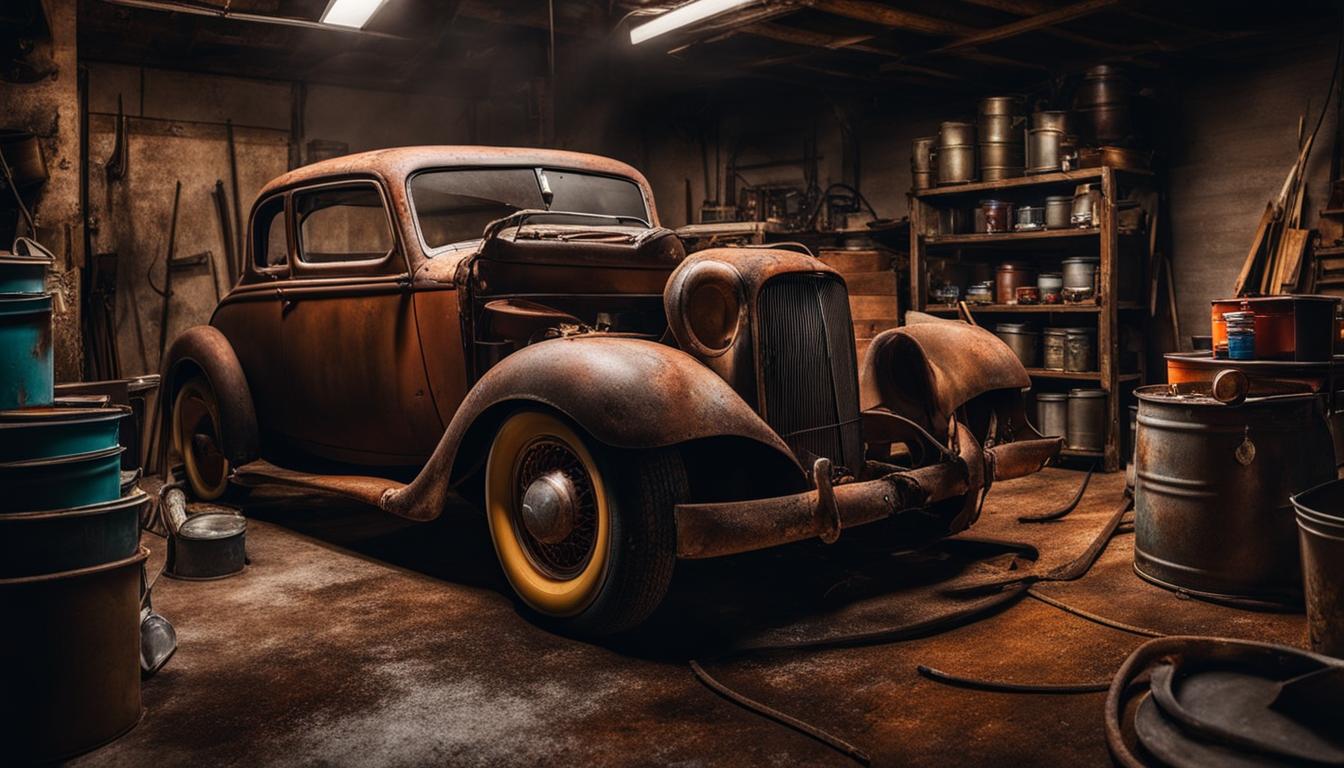
Painting a rat rod can be intimidating, as it requires different skills than other car modifications. However, anyone can achieve a professional-looking rat rod paint job with the right techniques and tools. In this master guide, we will explore step-by-step instructions, best practices, and tips to help you unleash your creativity and give your ride a unique vintage vibe.
Key Takeaways:
- Learn how to do a rat rod paint job like a pro
- Discover the best practices for achieving a professional result
- Explore step-by-step instructions and techniques
- Gain tips and tricks for a successful DIY rat rod paint job
- Get inspired by unique rat rod paint job ideas
Can You Do It? Should You Do It? How Much Does It Cost?
Before diving into a rat rod paint job, assessing whether you have the skills, time, and resources to do it yourself is important. While painting your own rat rod can save you money, it requires patience, attention to detail, and a willingness to learn new techniques. It’s essential to consider the cost of materials, tools, and any additional repairs that may be needed before starting the project.
Painting a rat rod yourself can be a rewarding experience, providing a sense of accomplishment and allowing you to customize your ride exactly as you envision it. By taking on the task, you have full control over your vehicle’s design, color scheme, and overall aesthetic. It is an opportunity to unleash your creativity and showcase your personal style.
However, it’s important to be realistic about your abilities and limitations. If you have little to no experience with painting or automotive work, it may be worth considering professional assistance. A professional painter will have the expertise and specialized equipment to deliver a high-quality finish that can withstand the test of time. Additionally, they may be able to offer valuable advice and recommendations based on their years of experience in the industry.
“Painting your own rat rod allows you to have complete control over the project and personalize your ride to your liking. However, it’s crucial to weigh the costs, both in terms of time and money, before taking on the task.” – Rat Rod Enthusiast
| Considerations Before Painting a Rat Rod |
|---|
| 1. Skill Level: Assess your painting skills and determine if you have the necessary expertise to achieve a professional finish. |
| 2. Time Commitment: Painting a rat rod requires careful preparation, multiple coats, and ample drying time. Consider if you have the time available to dedicate to the project. |
| 3. Tools and Equipment: Evaluate if you have access to the required tools and equipment for a successful paint job, including spray guns, sanders, and paint booth facilities. |
| 4. Budget: Calculate the cost of materials, paints, primers, clear coats, and any necessary repairs or rust treatments. Ensure you have a realistic budget in place before getting started. |
Stripping and Prepping the Car
Before you can start painting your rat rod, it is essential to strip the old paint and properly prepare the car. This step is crucial in ensuring a smooth and long-lasting paint job. It involves removing any existing rust, repairing dents, and ensuring that the body panels are aligned correctly.
Stripping the Paint
To strip the old paint, you can use a variety of methods such as sanding, chemical paint strippers, or media blasting. Each method has advantages and considerations, so choosing the technique that best suits your needs and abilities is important. If you’re unfamiliar with these processes, it may be wise to seek professional assistance to ensure the paint is stripped safely and thoroughly.
Repairing Rust and Dents
Rust can be a common issue in rat rods, especially if they have been exposed to the elements for an extended period. Before painting, it’s crucial to address any rust spots to prevent them from spreading and compromising the new paint job. You can remove rust by sanding, using rust converters, or cutting out and replacing the affected areas.
Similarly, dents and body imperfections should be repaired before painting. Depending on the severity of the damage, you may need to use techniques like hammer and dolly, body filler, or even panel replacement. Taking the time to make these repairs will ensure a smooth and even surface for the paint to adhere to.
| Table 1: Steps for Stripping and Prepping a Rat Rod |
|---|
| 1. Assess the condition of the existing paint and determine the best method for paint removal. |
| 2. Remove any trim, badges, or accessories that may interfere with the paint stripping process. |
| 3. Protect surrounding areas and windows from damage or overspray. |
| 4. Follow the appropriate paint stripping method, whether sanding, chemical stripping, or media blasting. |
| 5. Inspect the body for any rust spots and address them accordingly using rust converters or removal methods. |
| 6. Repair any dents or imperfections in the body panels using appropriate techniques and materials. |
| 7. Ensure proper alignment of the body panels and make any necessary adjustments. |
| 8. Clean the surface thoroughly to remove any debris or contaminants. |
By taking the time to strip the old paint, repair rust spots, and address body imperfections, you will create a solid foundation for a successful rat rod paint job. This careful preparation will ensure that the new paint adheres properly and provides a professional and durable finish for your unique ride.
Choosing the Right Materials and Tools
When it comes to achieving a professional rat rod paint job, selecting the right materials and tools is crucial. From paint options to safety equipment, each choice contributes to the quality and finish of your project. Here are some key considerations to keep in mind:
Materials for a Rat Rod Paint Job
Choosing the right materials is essential for a long-lasting and visually appealing paint job. Consider the following:
- Primer: Use a high-quality primer designed for automotive applications to ensure proper adhesion and durability. This will provide a solid base for your paint.
- Paint: Opt for automotive-grade paint that is specifically formulated for exterior use. Various paint options are available, such as acrylic enamel, urethane, and metallic finishes. Research different types to find the one that suits your desired look and budget.
- Clear Coat: Applying a clear coat on top of your paint will provide extra protection and enhance the shine of the finish. Make sure to choose a clear coat that is compatible with the type of paint you are using.
Tools for a Rat Rod Paint Job
Investing in the right tools can make a significant difference in the outcome of your paint job. Here are some essential tools you’ll need:
- Paint Brushes and Rollers: High-quality brushes and rollers will help you achieve smooth and even paint application. Choose ones specifically designed for automotive painting.
- Spray Gun: If you prefer using a spray gun, make sure to invest in a reliable and adjustable one. This will allow you to control the spray pattern and achieve a professional finish.
- Sanding Tools: Sanding is a crucial step in the preparation process. Have sanding blocks, discs, and sandpaper of various grits on hand to properly smooth and prep the surface.
- Masking Materials: To protect areas you don’t want to paint, use masking tape and plastic or paper sheeting to create barriers.
Safety Equipment for Painting a Car
Painting a car involves working with potentially hazardous materials. To ensure your safety, make sure to use the following protective equipment:
- Gloves: Wear gloves to protect your hands from chemical exposure and to keep the paint surface clean.
- Goggles/Face Shield: Protect your eyes from paint overspray and any debris that may come loose during the painting process.
- Respirator/Mask: Use a respirator or mask specifically designed for painting to minimize inhalation of fumes and harmful chemicals.
- Coveralls: To protect your clothing and skin from paint splatters, wear disposable coveralls or clothing that you don’t mind getting dirty.
By carefully selecting the right materials and tools, as well as prioritizing safety, you’ll be well-equipped to tackle your rat rod paint job like a pro.
Painting Techniques and Tips
When it comes to achieving a smooth paint finish on your rat rod, mastering the right painting techniques is crucial. Whether you’re a beginner or have some experience, these tips will help you avoid common pitfalls and create a professional-looking paint job.
Choose the Right Paint and Tools
Before diving into the painting process, choosing the right paint and tools for your rat rod is important. Consider factors such as the desired finish, durability, and ease of application. Automotive paints specifically designed for custom rat rods are a popular choice, as they offer a range of colors and finishes. Investing in high-quality brushes, spray guns, and masking materials will ensure a smoother application and better results.
Prepare the Surface Properly
Achieving a flawless paint finish starts with proper surface preparation. Begin by cleaning the car thoroughly and removing any dirt, grease, or debris. Next, sand the surface to create a smooth and even texture. This will help the paint adhere better and prevent any imperfections from showing through. Be sure to fill in any dents or scratches with body filler for a seamless finish.
Master the Painting Techniques
When it’s time to apply the paint, use even, overlapping strokes to achieve consistent coverage. Start with a light coat and gradually build up the layers to avoid drips and runs. Pay attention to the drying time between coats to ensure proper adhesion. If you aim for a custom effect, such as pinstriping or distressing, practice the technique on a test panel before applying it to your rat rod.
“The key to achieving a smooth paint finish is patience and attention to detail. Take your time, follow the proper techniques, and don’t rush the process.” – Experienced Rat Rod Painter
| Painting Techniques and Tips | Benefits and Considerations |
|---|---|
| Use even, overlapping strokes for consistent coverage | Creates a smooth and professional finish |
| Apply light coats and build up layers gradually | Prevents drips and runs |
| Practice custom effects on test panels before applying to the car | Ensures desired result without ruining the paint job |
Post-Paint Care and Maintenance
After completing the paint job on your rat rod, it’s crucial to follow proper post-paint care and maintenance to preserve the finish and keep your ride looking its best. Here are some essential steps you should take:
Protecting the Paint Finish
Consider applying a high-quality automotive wax or sealant to protect the paint finish from UV damage and harsh weather conditions. This will help create a barrier against environmental elements and keep the paint looking vibrant. Additionally, parking your rat rod in a covered area or using a car cover can further shield it from potential damage.
Cleaning and Maintaining the Painted Surface
Regular cleaning is essential to maintain the appearance of your painted rat rod. Use a mild automotive detergent and a soft microfiber cloth to wash the surface, avoiding abrasive materials that could scratch the paint. Be sure to rinse thoroughly and dry with a clean cloth to prevent water spots. Consider using a specialized automotive cleaner or detailing clay for stubborn stains or debris.
“Regular cleaning is essential to maintain the appearance of your painted rat rod.”
Addressing Touch-Ups and Minor Repairs
Over time, your rat rod may encounter minor chips, scratches, or imperfections in the paint. It’s important to address these issues promptly to prevent them from worsening. Keep a touch-up kit containing the matching paint color and follow the manufacturer’s instructions to touch up any damaged areas. For more significant repairs, it’s advisable to consult a professional to ensure a seamless and durable fix.
By following these post-paint care and maintenance tips, you can preserve the beauty of your rat rod’s paint job and enjoy a stunning ride for years to come.
| Post-Paint Care Tips | Benefits |
|---|---|
| Apply automotive wax or sealant | Protects against UV damage and weather conditions |
| Clean with mild automotive detergent | Maintains the appearance of the paint |
| Address touch-ups and repairs promptly | Prevents further damage |
Reassembly and Final Touches
Once the paint has dried and cured on your rat rod, it’s time to bring all the pieces back together and add those finishing touches. Reassembling your rat rod is an exciting phase where you get to see all your hard work come together. Paying attention to detail during this process is crucial to ensure a seamless and polished final result.
Start by carefully reinstalling any trim pieces that were removed during the painting process. Take your time to align them properly and make any necessary adjustments. This is also a great opportunity to inspect the condition of the trim pieces and replace any that are damaged or worn.
In addition to reassembling the main components, you can also consider adding custom decals or graphics to enhance the aesthetics of your rat rod further. This is where you can let your creativity shine and personalize your ride. Whether you prefer classic pinstripes, bold racing stripes, or intricate designs, decals and graphics can add that extra touch of uniqueness to your painted rat rod.
Table: Rat Rod Decal and Graphics Ideas
| Decal/Graphics Design | Description |
|---|---|
| Pinstriping | Design your logo or emblem to showcase your style or pay homage to a favorite brand. |
| Racing Stripes | Bold, diagonal lines that give your rat rod a sporty and aggressive appearance. |
| Custom Logos | Design your own logo or emblem to showcase your personal style or pay homage to a favorite brand. |
| Airbrush Art | Create stunning, intricate designs using airbrushing techniques for a truly unique look. |
Remember to take your time and ensure each decal or graphic is applied correctly, following the manufacturer’s instructions. Properly cleaning and preparing the surface before applying decals is crucial for optimal adhesion and longevity.
With the reassembly complete and the final touches added, step back and admire your work. Your rat rod has now been transformed into a true automotive masterpiece. Whether you’re planning to showcase it at car shows or enjoy cruising down the open road, your painted rat rod is sure to turn heads and evoke admiration wherever it goes.
Rat Rod Paint Job Ideas
When it comes to giving your rat rod a fresh coat of paint, the options for creativity are endless. Whether you want to embrace vintage-inspired designs or experiment with bold color combinations, there are plenty of ideas to consider. Let’s explore some rat rod paint job ideas that will help you transform your ride into a true head-turner.
Vintage-Inspired Rat Rod Paint Schemes
If you’re looking to capture the nostalgia of the golden era of hot rods, vintage-inspired paint schemes are a perfect choice. Consider classic color combinations like matte black with pinstriping, candy apple red with cream accents, or metallic silver with a distressed finish. These schemes evoke a timeless charm and pay homage to the roots of the rat rod culture.
Color Combinations for a Rat Rod
Don’t be afraid to step outside the box and experiment with unconventional color combinations for your rat rod. Break away from the traditional monotone paint jobs and consider vibrant hues like lime green paired with purple, electric blue with fiery orange, or neon pink with deep charcoal. These striking color combinations can make your rat rod a true standout on the road.
Popular Paint Trends for Rat Rods
To stay up-to-date with the latest trends in rat rod paint jobs, take inspiration from the automotive world. Metallic finishes, such as brushed steel or copper patina, can give your rat rod a sleek and modern look. Another popular trend is the use of custom graphics and airbrushing to add intricate details and personalized touches to your paint job. These trends allow you to showcase your style and make your rat rod unique.
| Rat Rod Paint Job Ideas | Description |
|---|---|
| Vintage-Inspired Rat Rod Paint Schemes | Embrace the nostalgia of hot rods with classic color combinations and pinstriping. |
| Color Combinations for a Rat Rod | Experiment with unconventional and vibrant color pairings to make a bold statement. |
| Popular Paint Trends for Rat Rods | Stay up-to-date with metallic finishes, custom graphics, and airbrushing to create a modern and unique look. |
“A rat rod paint job is a blank canvas for expressing your personal style and creativity. Think outside the box and let your imagination run wild!”
Remember, your rat rod paint job is an opportunity to showcase your individuality and passion for the automotive world. Whether you opt for a vintage-inspired scheme, bold color combination, or trendy finish, make sure it reflects your unique style. So, let your creativity shine and turn your rat rod into a work of art that will turn heads wherever you go!
Conclusion
Painting a rat rod is a challenging but rewarding project that allows you to unleash your creativity and give your ride a unique vintage vibe. By following the key steps and considerations outlined in this master guide, you can achieve a professional-looking paint job that will turn heads wherever you go.
Before diving into the project, assess your skills, time, and resources to determine if you can successfully complete a DIY rat rod paint job. Consider the cost of materials and tools and any necessary repairs to ensure you’re fully prepared.
Remember to strip and prep the car properly before painting, ensuring the body panels are aligned, and any rust or dents have been repaired. Choose the right materials and tools for the job, prioritizing safety with proper protective gear.
Master the painting techniques and apply even coats of paint to achieve a smooth finish. Take care of the paint finish post-painting through regular cleaning and maintenance. Finally, reassemble the rat rod and add the final touches to showcase your custom paint job.
Whether you choose a classic vintage-inspired design or a bold modern color combination, let your creativity shine through, and enjoy the process of creating a one-of-a-kind rat rod paint job!
FAQ
Can anyone do a rat rod paint job themselves?
Yes, with the right techniques and tools, anyone can achieve a professional-looking rat rod paint job.
What skills and resources are needed to paint a rat rod?
Painting a rat rod requires patience, attention to detail, and a willingness to learn new techniques. It’s also important to consider the cost of materials, tools, and any additional repairs that may be needed.
How do I strip and prep a car for painting?
Stripping the old paint and prepping the car may involve removing rust, repairing dents, and aligning body panels. It’s crucial to assess the condition of the car and decide on the appropriate level of preparation needed.
What materials and tools do I need for a rat rod paint job?
You will need to select the appropriate paint type and color, as well as invest in high-quality brushes, spray guns, and masking materials. It’s also important to prioritize safety by wearing proper protective equipment.
What painting techniques should I use for a rat rod?
Applying even coats of paint, avoiding drips and runs, and exploring custom effects such as pinstriping or distressing can help achieve a smooth and flawless finish on your rat rod.
How can I take care of the paint finish on my rat rod?
To ensure the longevity of your rat rod paint job, it’s important to protect it from UV damage, regularly clean and wax it, and address any minor touch-ups or repairs as needed.
Source Links
- https://www.onallcylinders.com/2018/04/03/paint-engine-bay-learn-pro-tips-paint-master-kevin-tetz/
- https://www.motortrend.com/how-to/hdrp-0605-paint-body-1/
- https://www.streetmusclemag.com/tech-stories/paint-body/getting-a-show-quality-finish-on-a-competition-vehicle-with-ppg/
Rat Rod Builds
Mastering the Art of Making a Rat Rod Street Legal
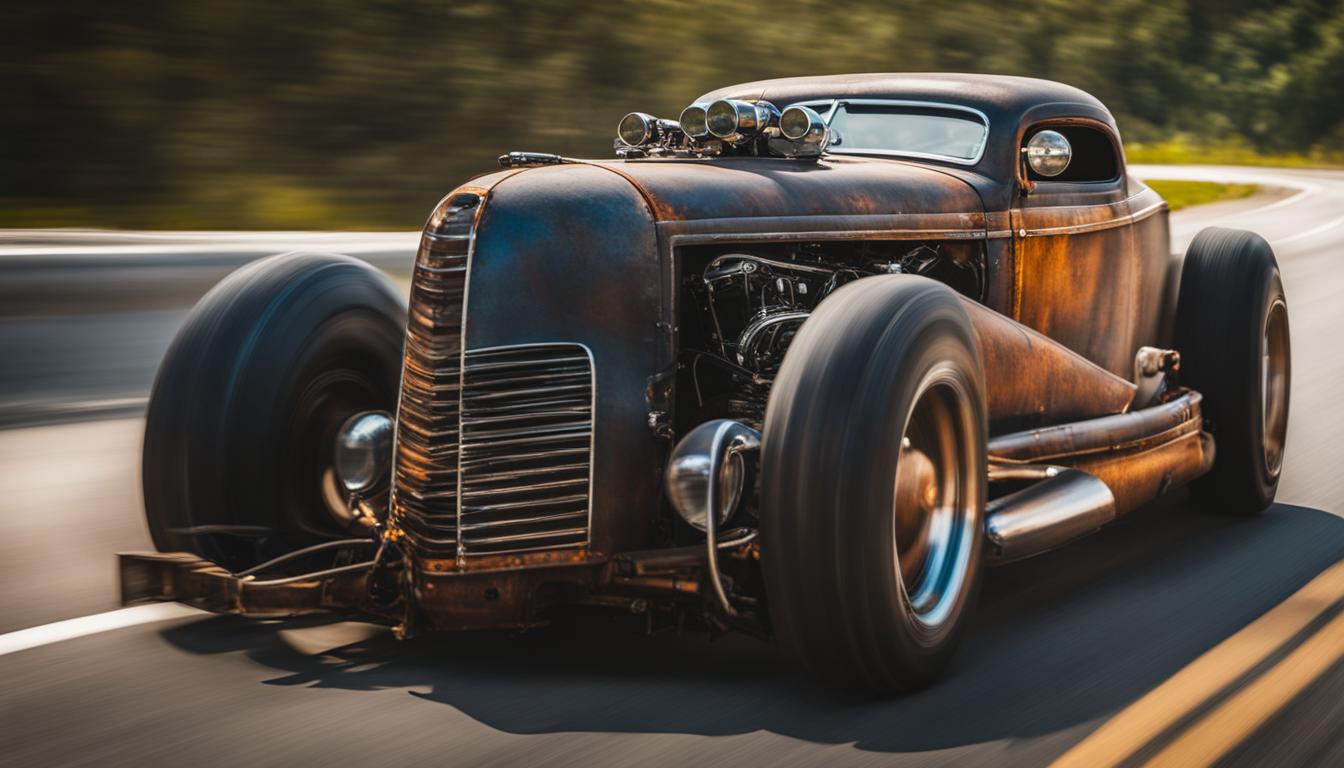
Rat rods have been a controversial trend in the automotive world for the past few decades. While they may not meet traditional standards of roadworthiness, it is possible to transform a rat rod into a street-legal vehicle without sacrificing its unique style and power. This comprehensive guide will explore the steps and requirements to make a rat rod compliant with street legal guidelines.
Key Takeaways:
- Transforming a rat rod into a street-legal vehicle is achievable while maintaining its unique style and power.
- Adhering to the necessary steps and requirements ensures compliance with street legal guidelines.
- Key aspects to consider include the frame and chassis, suspension and steering, brakes and electrical system, exterior modifications, interior and safety features, and the inspection and certification process.
- Converting a rat rod into a street legal vehicle requires careful planning and attention to detail.
- With the right modifications and modifications, rat rods can become a legal and safe option for automotive enthusiasts.
Understanding Rat Rods and their History
Rat rods have gained immense popularity in recent years, captivating automotive enthusiasts with their raw and unconventional appeal. These unique vehicles have a distinct style that sets them apart from traditional hot rods. To truly understand rat rods and their journey to becoming street legal, it is important to delve into their history and explore the motivations behind their design.
Rat rods emerged as a counter-movement to the polished and refined street rods that dominated the automotive scene in the 1990s. While street rods aimed for perfection and flawless aesthetics, rat rods sought to break the mold and challenge the conventional notions of what a car should look like. Rat rod builders embraced the idea of imperfection, deliberately incorporating rust, patina, and unique modifications to give their vehicles a weathered and edgy appearance.
It is important to note that there is often a blurred line between rat rods and traditional hot rods. Both genres share common elements such as vintage components and modifications. However, the key distinction lies in the intention behind the design. Rat rods are meant to push boundaries and provoke a reaction, while traditional hot rods strive for a polished and nostalgic look.
The Appeal of Rat Rods
Rat rods hold a special allure for automotive enthusiasts who appreciate their rebellious spirit and raw power. These vehicles embody a DIY ethos, with many builders using salvaged parts and custom fabrications to bring their creations to life. Rat rod culture fosters a sense of community and camaraderie, with enthusiasts sharing tips, ideas, and inspiration to advance the art of rat rod building.
“Rat rods are like rolling sculptures, where every scratch and imperfection tells a story,” says John Peterson, a renowned rat rod builder. “It’s about embracing the unconventional and creating something truly unique.”
To transform a rat rod into a street legal vehicle, it is necessary to navigate the fine line between preserving its distinctive character and meeting the requirements set by street legal guidelines. In the following sections, we will explore the steps and modifications needed to make a rat rod compliant with street legal standards, while retaining its rebellious charm and individuality.
Next, we will dive into the crucial aspects of the frame and chassis, understanding the importance of reinforcing and modifying these components to ensure safety and stability on the road.
The Frame and Chassis
Converting a rat rod into a street-legal vehicle requires careful consideration of the frame and chassis. While rat rods are known for their unconventional materials and techniques, reinforcing the frame is crucial for safety and stability on the road. A combination of scavenged steel tubing and new steel components, such as square tubing and I-beam axles, can be used to achieve this. This ensures that the frame can withstand the demands of the road and accommodate necessary modifications.
One important aspect to consider when modifying the frame and chassis is the inclusion of suspension upgrades. Upgrading the suspension allows for a smoother and more controlled ride, making the rat rod compliant with street legal standards. Builders can incorporate spindle assemblies and slider mechanisms into the front suspension to achieve this. These additions not only improve the vehicle’s overall performance but also contribute to its roadworthiness.
The Importance of Mounting Points
Another key consideration when modifying the frame and chassis is the inclusion of mounting points for the motor and transaxle. These mounting points ensure that the engine and transmission are securely positioned, reducing the risk of them shifting or becoming loose when driving. Additionally, they provide stability and balance to the rat rod, making it safer and more reliable on the road.
“Reinforcing the frame and chassis is essential when converting a rat rod into a street legal vehicle. By using a combination of scavenged and new steel components, builders can create a frame that can withstand the demands of the road while accommodating necessary modifications.”
| Benefits of Reinforcing the Frame and Chassis | Considerations for Suspension Upgrades | Importance of Mounting Points |
|---|---|---|
| 1. Enhanced safety and stability | 1. Smooth and controlled ride | 1. Secure positioning of the engine and transmission |
| 2. Accommodation of necessary modifications | 2. Improved overall performance | 2. Stability and balance for the rat rod |
| 3. Compliance with street legal standards | 3. Increased roadworthiness | 3. Reduction of shifting or loosening risks |
By taking the necessary steps to reinforce the frame and chassis of a rat rod, enthusiasts can ensure that their vehicle meets street legal standards without compromising its unique style and power. The combination of scavenged and new steel components, along with the inclusion of suspension upgrades and mounting points, contributes to the overall safety and performance of the rat rod. With these modifications in place, the rat rod can confidently hit the streets and turn heads wherever it goes.
Suspension and Steering
When it comes to making a rat rod street legal, ensuring that the suspension and steering system are in top shape is crucial. A well-functioning suspension provides a smooth and controlled ride, while a reliable steering system ensures safe maneuverability on the road.
Suspension
Incorporating spindle assemblies and slider mechanisms is a popular choice to create a proper front suspension for your rat rod. These components allow for a more controlled movement, ensuring stability during turns and bumps. Additionally, consider installing adjustable steering rods to fine-tune the suspension settings according to your preferences and road conditions.
Steering
For an effective steering mechanism, installing steering arms, adjustable steering rods, and a steering column with appropriate linkage is important. These components work together to translate your steering inputs into smooth and responsive movement. Prioritize safety by ensuring that all steering components are properly secured and aligned.
A well-designed suspension and steering system not only enhances the overall performance of your rat rod but it also plays a crucial role in meeting street legal requirements. Following these steps ensures that your rat rod is on the right track to becoming a legal and roadworthy vehicle.
| Components | Key Considerations |
|---|---|
| Spindle Assemblies and Slider Mechanisms | Allows for smooth and controlled movement |
| Adjustable Steering Rods | Enables fine-tuning of suspension settings |
| Steering Arms | Translates steering inputs into movement |
| Steering Column with Appropriate Linkage | Ensures responsive and safe steering |
Brakes and Electrical System
Upgrading the brakes is a crucial step in making a rat rod street legal. By installing dual circuit master cylinders, new brake pads, springs, and brake lines, you can greatly improve the stopping power of your rat rod and meet safety requirements. It’s essential to ensure that your brakes are in optimal condition to ensure the safety of both you and other drivers on the road.
The electrical system of your rat rod should also be a top priority when it comes to making it street legal. Proper wiring and a functional electrical system are necessary for key features such as lights, turn signals, and other safety controls. Make sure to include a fuse holder in your electrical system to provide added protection in case of any electrical malfunctions.
To ensure the safe operation of your rat rod, it’s important to mount the battery securely using adapters and incorporate necessary controls such as an on/off switch and speed governor. These additions will not only help you comply with street legal standards but also provide an extra layer of safety.
| Brake Upgrades | Electrical System Modifications |
|---|---|
|
|
Exterior Modifications
When it comes to making a rat rod street legal, one of the key areas to focus on is the exterior modifications. These modifications should enhance the rat rod’s visual appeal and ensure that it meets the necessary street legal guidelines.
One aspect to consider is the modification of the grille. Many rat rod enthusiasts opt for a custom grille that resembles an old-fashioned design, adding to the vintage aesthetic of the vehicle. It is important to ensure that the grille is visually appealing and functional, allowing airflow to the radiator and engine for optimal performance.
In addition to the grille, it is imperative to have all the necessary lights in place and functioning properly. This includes headlights, taillights, and turn signals. These lights contribute to the vehicle’s safety and ensure that it meets the legal requirements for roadworthiness. Installing high-quality, durable lights that provide optimal visibility in different driving conditions is recommended.
Lastly, the body of the rat rod should be structurally sound. Any rust should be repaired, and reinforcement should be added as needed. This ensures the integrity of the vehicle and enhances its safety on the road. It is crucial to pay attention to these exterior modifications to ensure that the rat rod meets street legal requirements while still maintaining its unique style.
| Exterior Modifications Checklist | Completion Status |
|---|---|
| Custom grille installation | Completed |
| Headlights, taillights, and turn signals installation | In progress |
| Rust repairs and body reinforcement | Not started |
Interior and Safety Features
When it comes to making a rat rod street legal, ensuring the interior is equipped with appropriate safety features is of utmost importance. While rat rods may exude a retro and edgy style, it is crucial to prioritize the safety of the driver and passengers. The interior modifications should balance maintaining the rat rod’s unique character and meeting the necessary street legal guidelines.
A key aspect of the interior is the seating arrangement. Incorporating tractor seats with springs adds a vintage touch and provides comfort during the ride. While choosing the seats, it is essential to ensure they are securely mounted and properly restrained to prevent any injury in the event of sudden stops or accidents.
In addition to comfortable seating, installing seatbelts is essential to comply with street legal requirements. Seatbelts are crucial safety features that protect occupants in case of a collision or sudden impact. It is important to ensure that the seatbelts are properly anchored and meet the necessary safety standards.
Furthermore, for added safety, consider installing a roll cage. A roll cage provides structural rigidity to the rat rod and protects the occupants in the event of a rollover accident. It is recommended to consult with a professional fabricator to design and install a roll cage that is tailored to the specific rat rod’s dimensions and requirements. Additionally, having a fire extinguisher on board is essential to quickly respond to any potential fire hazards that may arise during the operation of the vehicle.
In conclusion, when it comes to interior and safety features, it is vital to strike a balance between preserving the unique style of a rat rod and ensuring compliance with street legal requirements. By incorporating seating with appropriate safety measures, such as seatbelts and a roll cage, rat rod enthusiasts can enjoy their rides with added peace of mind.
Inspection and Certification
Once all modifications have been made to the rat rod, it is important to schedule a vehicle inspection to ensure compliance with street legal guidelines. This inspection plays a crucial role in verifying that the rat rod meets the necessary requirements for roadworthiness. It thoroughly examines various aspects, including the frame, suspension, steering, brakes, electrical system, exterior modifications, and safety features. This inspection aims to ensure that the rat rod is safe to drive on public roads and meets all the necessary regulations.
During the inspection process, the inspector will carefully assess the frame’s structural integrity, checking for any signs of damage or weakness. They will also evaluate the suspension system to ensure it is capable of providing a smooth and controlled ride. The steering system will be inspected to ensure proper functionality and responsiveness. Additionally, the inspector will check the brakes and electrical system to ensure they meet the required safety and performance standards.
In addition to the mechanical components, the inspector will also review the exterior modifications of the rat rod. This includes verifying that all necessary lights, such as headlights, taillights, and turn signals, are present and in working order. The body of the vehicle will be inspected for any structural issues or rust repairs that may be needed. Additionally, the interior will be evaluated to ensure the presence of essential safety features, such as seatbelts, a roll cage, and a fire extinguisher.
Depending on your location, additional certifications or registrations may be required for the rat rod to be deemed roadworthy. These additional requirements may include emissions testing, registration fees, or further documentation. It is important to research and understand the specific regulations in your area to ensure that all necessary steps are taken to operate your rat rod on the road. By completing the inspection and meeting all the required certifications, you can have peace of mind knowing that your rat rod meets street legal guidelines and is ready for the open road.
| Component | Inspection Points |
|---|---|
| Frame | Structural integrity, damage, weakness |
| Suspension | Smooth and controlled movement |
| Steering | Functionality and responsiveness |
| Brakes | Stopping power, safety requirements |
| Electrical System | Proper wiring, fuse holder, controls |
| Exterior Modifications | Lights, rust repairs, reinforcement |
| Safety Features | Seatbelts, roll cage, fire extinguisher |
Conclusion
Converting a rat rod into a street legal vehicle requires careful planning, adherence to regulations, and attention to detail. By following the steps outlined in this guide and meeting the necessary requirements, rat rod enthusiasts can enjoy the unique style and power of their vehicle while also ensuring that it is roadworthy and compliant with street legal guidelines. With the right modifications and modifications, rat rods can become a legal and safe option for automotive enthusiasts.
FAQ
Can a rat rod be made street legal?
Yes, it is possible to transform a rat rod into a street legal vehicle by making certain modifications and meeting the necessary requirements.
What are the requirements for making a rat rod street legal?
The requirements include reinforcing the frame and chassis, upgrading the suspension and steering system, improving the brakes and electrical system, making necessary exterior modifications, and ensuring the presence of safety features in the interior.
How should the frame and chassis of a rat rod be reinforced?
The reinforcement can be achieved by using a combination of scavenged steel tubing and new steel components, such as square tubing and I-beam axles.
What modifications are needed for the suspension and steering system?
The front suspension can be created by incorporating spindle assemblies and slider mechanisms, while steering arms, adjustable steering rods, and a steering column with appropriate linkage should also be installed.
What upgrades should be made to the brakes and electrical system?
Upgrades should include installing dual circuit master cylinders, new brake pads, springs, and brake lines, as well as properly wiring the electrical system and adding necessary controls and safety features.
What exterior modifications are required for a street legal rat rod?
Exterior modifications may include modifying the grille, creating a custom grill shell, and ensuring the presence and functionality of necessary lights such as headlights, taillights, and turn signals.
What safety features should be included in the interior of a rat rod?
Adequate seating with appropriate safety features such as seatbelts, a roll cage, and a fire extinguisher should be installed to meet street legal requirements.
Is an inspection necessary to make a rat rod street legal?
Yes, it is important to schedule a vehicle inspection to ensure compliance with street legal guidelines, which may include checks on the frame, suspension, steering, brakes, electrical system, exterior modifications, and safety features.
Can a rat rod become a legal and safe vehicle?
Yes, by following the steps outlined in this guide and meeting the necessary requirements, rat rods can become legal and safe options for automotive enthusiasts.
Source Links
Rat Rod Builds
Discover Where to Buy a Rat Rod – Top Marketplaces Revealed
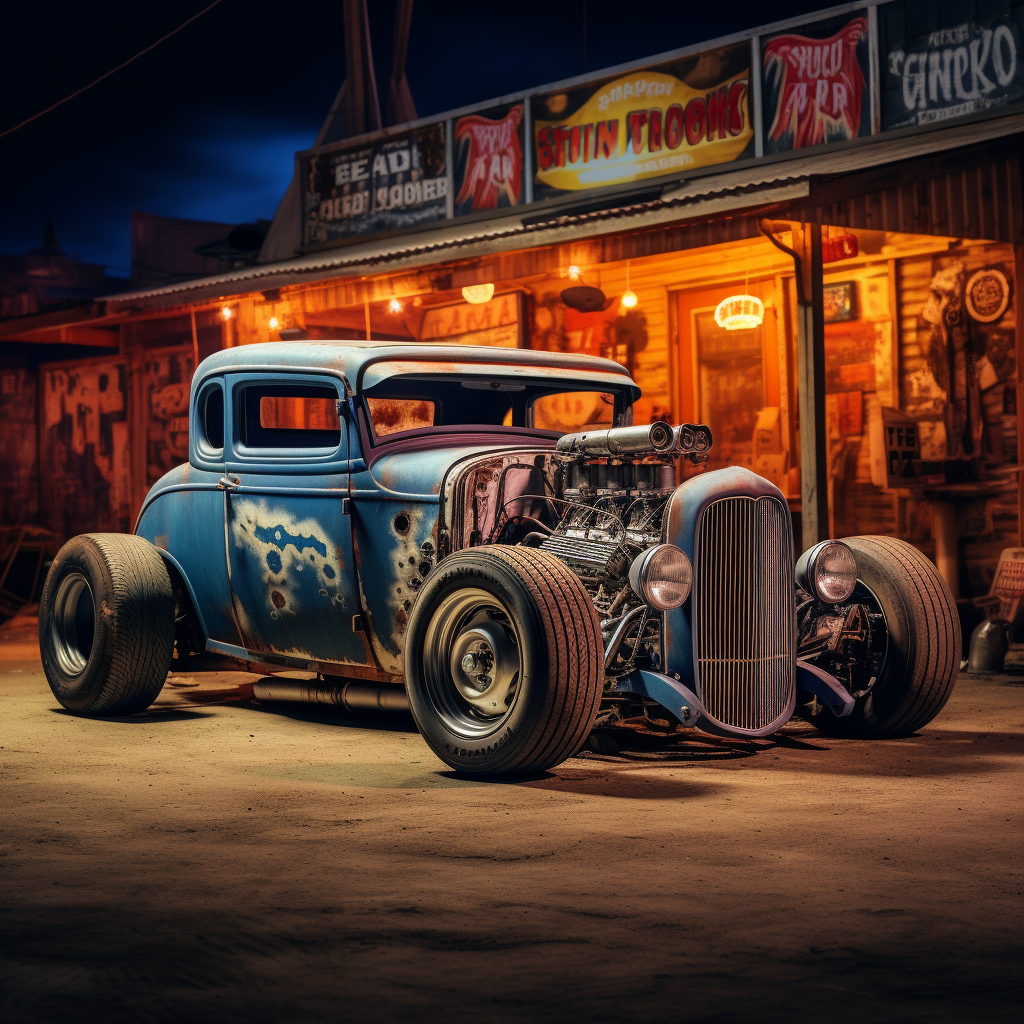
Are you a fan of unique and stylish vehicles? If so, you may have heard of rat rods. These custom-built cars embody the spirit of individuality and creativity, with their rough and raw appearance. Whether you’re a seasoned collector or a first-time buyer, finding the perfect rat rod can be an exciting adventure. But where exactly can you buy a rat rod? In this article, we will reveal the top marketplaces where you can find a rat rod for sale.
Key Takeaways:
- There are various marketplaces to buy a rat rod, catering to different types and budgets.
- Online platforms like Craigslist and eBay offer convenient access to rat rod listings from the comfort of your own home.
- Physical events like the Fall Carlisle event feature automotive flea markets and auctions, providing a wide selection of rat rods.
- Consider researching the specific model or build, inspecting the condition, and negotiating the price before making a purchase.
- Restoring a rat rod can be a rewarding process, but it requires time, patience, and skill.
Tips for Buying a Rat Rod
When looking to buy a rat rod, there are several important tips to keep in mind. Researching and finding a reputable seller is crucial to ensure a smooth buying process and to get the best value for your money. Here are some tips to help you in your search:
- Look for established rat rod shops or dealerships: Rat rod shops or dealerships that specialize in custom or vintage rat rods are more likely to have a wide selection and extensive knowledge about the vehicles. They can guide you through the buying process and provide valuable insights.
- Check online listings: In addition to physical locations, explore online marketplaces like Craigslist and eBay for a wider range of options. These platforms often have listings for rat rods, allowing you to browse and shop from the comfort of your own home.
- Inspect the condition: Before making your purchase, thoroughly inspect the rat rod for any signs of rust, damage, or mechanical issues. Take note of any areas that may need repair or modification, as these factors can affect the overall value and performance of the vehicle.
- Negotiate the price: Don’t be afraid to negotiate the price with the seller. Do your research on the market value of similar rat rods and use this knowledge to negotiate a fair price. Remember, being prepared to walk away if the price is not within your budget is essential.
Remember, buying a rat rod is not just about the vehicle itself, but also about the buying experience. Take your time, do your research, and find a seller that you trust and feel comfortable with. With patience and careful consideration, you can find the perfect rat rod that meets your needs and brings you joy for years to come.
Tips for Buying a Rat Rod Table:
| Tips | Description |
|---|---|
| Look for established rat rod shops or dealerships | Rat rod shops or dealerships that specialize in custom or vintage rat rods are more likely to have a wide selection and extensive knowledge about the vehicles. They can guide you through the buying process and provide valuable insights. |
| Check online listings | Explore online marketplaces like Craigslist and eBay for a wider range of options. These platforms often have listings for rat rods, allowing you to browse and shop from the comfort of your own home. |
| Inspect the condition | Thoroughly inspect the rat rod for any signs of rust, damage, or mechanical issues. Take note of any areas that may need repair or modification, as these factors can affect the overall value and performance of the vehicle. |
| Negotiate the price | Do your research on the market value of similar rat rods and use this knowledge to negotiate a fair price. Remember, being prepared to walk away if the price is not within your budget is essential. |
Types of Rat Rods Available
When it comes to buying a rat rod, there are various types available for sale. Whether you’re looking for a custom build or a vintage vehicle, there are options to suit every buyer’s preferences and style. Let’s take a closer look at the different types of rat rods you can find on the market.
Custom Rat Rods
Custom rat rods are unique builds that showcase the creativity and individuality of their owners. These rat rods often incorporate different parts and styles, resulting in one-of-a-kind vehicles that stand out from the crowd. From wild paint schemes to custom body modifications, custom rat rods offer endless possibilities for those looking for a truly personalized ride. If you’re interested in a rat rod that reflects your own taste and personality, a custom build might be the perfect choice.
Vintage Rat Rods
On the other hand, if you’re a fan of classic cars with a bit of an edge, vintage rat rods are worth considering. These are older vehicles that have been modified to create the distinct rat rod appearance. Vintage rat rods often retain their original charm and character while incorporating modern elements to enhance performance and aesthetics. If you appreciate the nostalgia and timeless appeal of vintage vehicles, a rat rod build based on a classic car could be the ideal option for you.
Whether you’re drawn to the uniqueness of custom rat rods or the timeless appeal of vintage builds, both types offer different styles and options for buyers to choose from. Take your time to explore the market, do your research, and find the perfect rat rod that matches your preferences and captures your imagination.
| Type of Rat Rod | Description |
|---|---|
| Custom Rat Rods | Unique builds that showcase creativity and incorporate different parts and styles. |
| Vintage Rat Rods | Older vehicles that have been modified to create a rat rod appearance, retaining their original charm while incorporating modern elements. |
Budget-Friendly Rat Rods
If you’re passionate about rat rods but working with a tight budget, don’t worry! There are still options available that won’t break the bank. Look for low budget rat rods or affordable alternatives that can help you get into the rat rod scene without draining your wallet.
Here are a few tips to find budget-friendly rat rods:
- Consider buying a rat rod project: Many enthusiasts start their rat rod journey by purchasing a project vehicle that needs some work. With a little time and effort, you can bring these projects to life and create a unique rat rod on a budget.
- Explore local classifieds: Check out local classified ads and online marketplaces to find rat rods being sold directly by owners. Often, these private sellers are more flexible on pricing and may offer affordable options.
- Attend swap meets and car shows: Swap meets and car shows often have vendors selling rat rods at various price points. Explore these events to find budget-friendly options and negotiate with sellers to get the best deal.
“Buying a budget-friendly rat rod doesn’t mean compromising on style or quality. With some creativity and resourcefulness, you can find a rat rod that fits your budget and still reflects your personal taste,” says Mark Thompson, a seasoned rat rod enthusiast.
By being resourceful and keeping an open mind, you can find a budget-friendly rat rod that allows you to join the rat rod community and enjoy the thrill of owning a unique and stylish vehicle.
| Pros | Cons |
|---|---|
| Cost-effective way to get into the rat rod scene | May require some work or modifications |
| Opportunity to create a unique rat rod | Availability may be limited |
| Flexible pricing options | May not have all the customization options |
The Fall Carlisle Event
The Fall Carlisle event is a highly anticipated automotive flea market that attracts car enthusiasts from all over. With its vast array of automotive parts, accessories, cars, collectibles, and memorabilia, it is a haven for anyone looking to find unique treasures for their projects. The event is held annually and has gained a reputation as one of the largest and most diverse automotive events in the world.
At the heart of the Fall Carlisle event is the massive car corral, where car owners and sellers have the opportunity to display their vehicles for sale. This is where you can find a wide selection of rat rods, among other types of cars. The car corral allows buyers to inspect the vehicles up close and engage in negotiations with the sellers. It’s a great opportunity to find your dream rat rod and make a deal directly with the owner.
In addition to the car corral, the Fall Carlisle event also features a two-day auction presented by Carlisle Auctions. This is where you can witness the excitement of live bidding and potentially score a rat rod that catches your eye. The auction offers a curated selection of vehicles, ensuring that only the best make it to the auction block. It’s an exhilarating experience for both buyers and spectators.
| Event Highlights | Date | Location |
|---|---|---|
| Automotive flea market | October 6-10, 2021 | Carlisle, Pennsylvania |
| Car corral | October 6-10, 2021 | Carlisle, Pennsylvania |
| Carlisle Auctions | October 7-8, 2021 | Carlisle, Pennsylvania |
“The Fall Carlisle event is a must-visit for any car enthusiast. The opportunity to explore the automotive flea market, browse the car corral, and participate in the exhilarating auction makes it a truly unforgettable experience. Whether you’re hunting for a rat rod or simply enjoying the sights and sounds of the event, Fall Carlisle has something for everyone.”
Car enthusiasts unite at Fall Carlisle
Car enthusiasts from all walks of life come together at the Fall Carlisle event. It’s a gathering of like-minded individuals who share a passion for cars, whether it’s classic, modified, or custom-built. The event provides a unique opportunity to connect with fellow car enthusiasts, share stories, and gain insights into the world of automotive restoration and customization.
Rat Rod Listings Online
When it comes to finding a rat rod for sale, online marketplaces offer a convenient and extensive selection. Websites like Craigslist and eBay are popular platforms where you can browse through various listings and connect with sellers. These online marketplaces provide a wide range of options, from custom-built rat rods to vintage gems waiting to be discovered.
Benefits of Online Marketplaces
One of the benefits of using online marketplaces is the ability to search for rat rods based on specific criteria. You can filter your search by location, price range, year, and other factors, making it easier to find the right rat rod for your preferences and budget. Additionally, online marketplaces often have a large number of listings, giving you a better chance of finding exactly what you’re looking for.
Another advantage of using online marketplaces is the opportunity to communicate directly with sellers. You can ask questions, request additional photos or videos, and negotiate the price, all from the comfort of your own home. However, it’s essential to exercise caution and verify the legitimacy of the seller before making any transactions.
Considerations When Using Online Marketplaces
While online marketplaces offer convenience and a wide selection, it’s crucial to approach them with caution. Be sure to thoroughly research the seller’s reputation and read any available reviews or feedback from previous buyers. Take the time to inspect the photos and description provided in the listing and ask for more details if necessary. If possible, arrange to see the rat rod in person or have it inspected by a trusted mechanic before making a purchase.
| Online Marketplace | Benefits | Considerations |
|---|---|---|
| Craigslist | – Wide range of listings – Local options – Direct communication with sellers | – Verify seller’s legitimacy – Thoroughly inspect listings |
| eBay | – Extensive selection – Buyer protection program – Auction and ‘Buy It Now’ options | – Research seller’s reputation – Read listing details carefully |
By using online marketplaces for rat rod listings, you can broaden your search and connect with sellers from all over. Just remember to exercise caution, do your research, and take the necessary steps to ensure a smooth and successful transaction.
Researching and Inspecting a Rat Rod
Before purchasing a rat rod, it is crucial to conduct thorough research to ensure you are making an informed decision. Start by exploring online forums, where enthusiasts share their experiences and insights about various rat rod models and builders. Look for reviews, tips, and discussions related to the specific rat rod you are interested in. This research will provide valuable information about the vehicle’s performance, maintenance requirements, and any known issues that may affect its functionality.
Additionally, consider joining local car clubs or attending car shows and events where rat rod owners gather. Talking to fellow enthusiasts can give you a deeper understanding of the rat rod community and provide valuable insights into the specific model or build you are considering. They may also recommend reputable sellers or builders who have a good reputation for producing high-quality rat rods.
Once you have completed your research and identified a rat rod that piques your interest, it is essential to inspect the vehicle in person. Take the time to thoroughly check the rat rod’s condition, both inside and out. Look for any signs of rust, damage, or poor craftsmanship. Pay attention to the engine, suspension, brakes, and other mechanical components to ensure they are in working order.
It is also recommended to take the rat rod for a test drive, if possible, to evaluate its performance and handling. This will give you a firsthand experience of how the vehicle operates and help you determine if it meets your expectations. Lastly, don’t hesitate to ask the seller or builder for any maintenance records or history of repairs and modifications. This information will give you a better understanding of the rat rod’s overall care and maintenance throughout its lifespan.
Benefits of Researching and Inspecting a Rat Rod:
- Gather valuable information about the specific rat rod model or build
- Learn from experienced rat rod enthusiasts through online forums and local car clubs
- Identify reputable sellers or builders with a good reputation
- Thoroughly inspect the rat rod’s condition, inside and out
- Check the mechanical components and take the vehicle for a test drive
- Ask for maintenance records and history of repairs and modifications
“Researching and inspecting a rat rod is essential to ensure you are making the right choice and investing in a vehicle that meets your expectations. By gathering information and thoroughly evaluating the rat rod’s condition, you can make an informed decision and enjoy the thrill of owning a unique and stylish vehicle.” – Rat Rod Enthusiast
| Researching and Inspecting a Rat Rod Checklist |
|---|
| Conduct online research on forums and websites |
| Join local car clubs and attend car shows |
| Inspect the rat rod’s condition, both inside and out |
| Check for signs of rust, damage, or poor craftsmanship |
| Thoroughly examine the engine, suspension, and brakes |
| Take the rat rod for a test drive |
| Ask for maintenance records and history of repairs |
Checking the Condition and History
When purchasing a rat rod, it is crucial to thoroughly inspect its condition to ensure you are making a sound investment. Take the time to carefully examine the vehicle for any signs of rust, damage, or wear. Pay particular attention to the body, frame, and undercarriage. Additionally, inspect the engine, transmission, suspension, and brakes to ensure they are in good working order. Look for fluid leaks or any other potential issues that may require repairs or maintenance. It is also advisable to take the rat rod for a test drive to assess its performance and handling.
In addition to checking the condition, gathering information about the rat rod’s history is equally important. Discovering the vehicle’s background can provide valuable insights into its previous owners, maintenance records, and any modifications or repairs that have been made. A comprehensive history can help you make an informed decision and avoid potential surprises down the road. If possible, request documentation supporting the rat rod’s history, such as service records, receipts, or previous registration documents.
By carefully checking the condition and history of a rat rod, you can ensure that you are purchasing a vehicle that meets your expectations and is in good overall condition. Taking the time to conduct a thorough inspection and gather information will give you peace of mind and help you make an informed buying decision.
| What to Check | Why It’s Important |
|---|---|
| Body and Frame | To identify any signs of rust, damage, or poor repair work that may affect the structural integrity of the rat rod. |
| Engine and Transmission | To ensure they are in good working condition and free from any significant issues or leaks. |
| Suspension and Brakes | To verify that the rat rod’s suspension and braking systems are functioning properly for safe and reliable driving. |
| Fluid Leaks | To identify any potential leaks that may indicate underlying mechanical problems. |
| Test Drive | To assess the rat rod’s performance, handling, and overall driving experience. |
| History Documentation | To gain insights into the rat rod’s past ownership, maintenance records, and any modifications or repairs. |
Negotiating the Price
When buying a rat rod, it is often possible to negotiate the price with the seller. Negotiation can be a valuable tool in getting a fair deal and ensuring that the price aligns with the value of the vehicle. Here are some tips to help you negotiate the price of a rat rod:
- Do your research: Before entering into negotiations, research the market value of similar rat rods. This will give you a better understanding of what the vehicle is worth and provide you with leverage during the negotiation process.
- Highlight any issues: If you notice any flaws or areas that may require repair or modification, use these as negotiating points. Point out the cost of potential repairs or improvements that the seller may need to consider.
- Be prepared to walk away: Sometimes, the seller may not be willing to negotiate or may be asking for a price that is beyond your budget. In these cases, it is important to be prepared to walk away if the terms are not favorable. There are plenty of other rat rods available, and you don’t want to settle for a vehicle that doesn’t meet your requirements or financial limitations.
- Consider the seller’s perspective: Understanding the seller’s motivations can also help in the negotiation process. Are they looking for a quick sale? Do they have a personal attachment to the vehicle? By considering these factors, you may be able to find common ground and reach a mutually beneficial agreement.
Remember, negotiating the price of a rat rod is a common practice, so don’t be afraid to engage in the process. Stay firm but respectful, and be open to compromise. With the right communication and research, you can increase your chances of getting a great deal on your dream rat rod.
Example of Negotiation:
| Listing Price | Negotiated Price | Savings |
|---|---|---|
| $15,000 | $12,500 | $2,500 |
| $18,000 | $16,000 | $2,000 |
| $20,000 | $17,500 | $2,500 |
This table showcases examples of negotiated prices compared to the original listing prices. As you can see, by engaging in the negotiation process, buyers were able to save significant amounts of money on their rat rod purchases. This highlights the importance of negotiation and the potential benefits it can bring.
The Process of Restoring a Rat Rod
Restoring a rat rod can be a labor of love, transforming a rundown vehicle into a unique and stylish ride. The restoration process requires time, patience, and a keen eye for detail. Whether you’re a seasoned car enthusiast or a beginner, understanding the steps involved can help you navigate the restoration journey successfully.
Gathering Your Tools and Supplies
Before diving into the restoration process, it’s essential to gather the necessary tools and supplies. These may include wrenches, screwdrivers, sandpaper, paint, primer, and various automotive cleaning products. Having a well-stocked toolbox will ensure you have everything you need to tackle different aspects of the restoration.
Assessing and Planning
Start by assessing the condition of the rat rod. Look for signs of rust, damage, and mechanical issues. Take note of the areas that will require repair, replacement, or modification. Based on your assessment, create a detailed plan outlining the steps you’ll take to restore the vehicle.
It’s essential to prioritize tasks and set a realistic timeline for each stage of the restoration process. This will help you stay organized and ensure that you complete the project efficiently.
Stripping and Cleaning
The next step involves stripping the rat rod down to its bare bones. Remove all parts and components, including the engine, interior, and body panels. This will allow you to thoroughly clean each item and assess their condition individually.
Clean all parts using appropriate cleaning products, removing dirt, grease, and rust. This step is crucial to prepare the components for restoration and ensure a clean and smooth finish.
Repairing and Upgrading
Once all parts are clean, it’s time to start repairing or replacing any damaged or worn-out components. This may involve welding, sanding, filling, or replacing parts entirely. Pay special attention to the structural integrity of the rat rod, ensuring that it meets safety standards.
Additionally, consider any upgrades or modifications you’d like to make during the restoration process. This could include enhancing the engine performance, upgrading the suspension, or adding modern features to improve the overall driving experience.
Painting and Finishing
The final stage of the restoration process is painting and finishing the rat rod. This is where you can unleash your creativity and give your vehicle a unique look. Choose a color scheme that reflects your personal style and complements the overall design of the rat rod.
Apply multiple coats of primer and paint, ensuring even coverage and a smooth finish. Once the paint has dried, add any finishing touches, such as chrome accents, decals, or custom upholstery, to complete the restoration.
| Steps | Description |
|---|---|
| Gathering Your Tools and Supplies | Collect all the necessary tools and supplies for the restoration process. |
| Assessing and Planning | Assess the condition of the rat rod, plan the restoration process, and set a timeline for each stage. |
| Stripping and Cleaning | Remove all parts, clean them thoroughly, and evaluate their condition. |
| Repairing and Upgrading | Repair or replace damaged or worn-out components and consider upgrades or modifications. |
| Painting and Finishing | Paint the rat rod with chosen colors, apply finishing touches, and complete the restoration process. |
Cutting-Edge Rat Rod Designs
Rat rods have come a long way since their inception, evolving into cutting-edge designs that push the boundaries of traditional styles. These innovative rat rod builds incorporate new technologies and materials, resulting in truly unique and eye-catching vehicles. Whether it’s the use of unconventional materials, advanced engineering techniques, or futuristic aesthetics, cutting-edge rat rods showcase the creativity and ingenuity of their builders.
Innovative Material Usage
One of the hallmarks of cutting-edge rat rod designs is the use of innovative materials. Builders are stepping outside the traditional realm of steel and exploring alternatives such as carbon fiber, aluminum, and even unconventional materials like reclaimed wood or recycled plastics. This experimentation with materials not only adds a distinct visual appeal but also offers advantages in terms of weight reduction, fuel efficiency, and increased performance.
For example, some rat rods feature carbon fiber body panels, which are not only lightweight but also incredibly strong. This allows for greater structural integrity while reducing overall weight, resulting in improved acceleration and handling. Additionally, the use of aluminum components further contributes to weight reduction, making these rat rods agile and nimble on the road.
Futuristic Design Aesthetics
Cutting-edge rat rods often incorporate futuristic design aesthetics, embracing sleek lines, bold angles, and innovative styling cues. These designs can draw inspiration from science fiction, aerospace engineering, or even avant-garde architecture. With their unique shapes and attention-grabbing details, these rat rods stand out from the crowd and make a statement on the road.
“The future of rat rods lies in the hands of creative builders who are not afraid to experiment and challenge conventional norms. These cutting-edge designs inspire the next generation of enthusiasts and push the boundaries of what is possible in the world of rat rods.”
Advanced Technology Integration
Another aspect of cutting-edge rat rod designs is the integration of advanced technologies. Builders are incorporating modern features such as LED lighting systems, touchscreen infotainment systems, and even electric or hybrid powertrains. These technological advancements not only enhance the functionality and convenience of the rat rods but also contribute to their overall appeal.
Furthermore, some cutting-edge rat rods embrace sustainable technologies, such as regenerative braking or solar panels, to reduce their environmental impact. This combination of advanced technology and eco-consciousness showcases the forward-thinking nature of these innovative builds.
| Feature | Description |
|---|---|
| Carbon Fiber Body Panels | Lightweight and strong, enhancing performance and fuel efficiency. |
| Sleek Lines and Bold Angles | Futuristic design aesthetics that make a visual statement on the road. |
| LED Lighting Systems | Modern lighting technology for enhanced visibility and style. |
| Touchscreen Infotainment Systems | Convenient and user-friendly multimedia interfaces. |
| Electric or Hybrid Powertrains | Environmentally friendly alternatives to traditional combustion engines. |
With their innovative designs, cutting-edge rat rods not only turn heads but also inspire the next generation of builders to push the boundaries of rat rod customization. These unique vehicles continue to redefine what is possible in the world of automotive design and offer enthusiasts a glimpse into the future of rat rodding.
Conclusion
In conclusion, there are various options and marketplaces available for buying a rat rod. Whether you’re looking for a custom build, a vintage vehicle, or a budget-friendly option, there are options out there for every enthusiast.
When embarking on your rat rod journey, it’s important to do your research and inspect the condition of the vehicle. Take the time to gather information about the specific model or build you’re interested in, and don’t hesitate to ask questions.
Negotiating the price is also an important step. Armed with knowledge about the market value of similar rat rods, you can confidently discuss the price with the seller and aim for a fair deal.
If you’re considering a rat rod that needs some work, don’t forget to factor in the restoration process. While it can be a rewarding endeavor, it requires time, patience, and skill. Consider the steps involved and decide if you’re up for the challenge.
With the right approach, you can find the perfect rat rod for your needs and enjoy the thrill of owning a unique and stylish vehicle. Happy rat rod hunting!
FAQ
Where can I buy a rat rod?
You can buy a rat rod from established rat rod shops or dealerships that specialize in custom or vintage rat rods. There are also online marketplaces like Craigslist and eBay where you can find rat rod listings.
What types of rat rods are available for sale?
Are there budget-friendly options for buying a rat rod?
What is the Fall Carlisle event?
The Fall Carlisle event is an automotive flea market that features a wide array of automotive parts, accessories, cars, collectibles, and memorabilia. It also includes a car corral and a two-day auction presented by Carlisle Auctions.
Where can I find rat rods for sale online?
How should I research and inspect a rat rod before buying?
Before buying a rat rod, it is important to research the specific model or build you are interested in. Look for reviews, forums, and articles about the vehicle to gather as much information as possible. When inspecting a rat rod in person, take note of any potential issues or areas that may need repair or modification.
What should I check when considering the condition and history of a rat rod?
When checking the condition of a rat rod, look for signs of rust or damage and consider the overall maintenance and care the rat rod has received. Additionally, try to gather information about the rat rod’s history, including previous owners and any modifications or repairs that have been made.
Can I negotiate the price of a rat rod?
Yes, it is often possible to negotiate the price of a rat rod with the seller. Do your research on the market value of similar rat rods and use this knowledge to negotiate a fair price. Be prepared to walk away if the seller is not willing to negotiate or if the price is not within your budget.
What is the process of restoring a rat rod?
Restoring a rat rod requires time, patience, and skill. Basic steps include checking fuses, replacing electrolytics, testing tubes, checking wiring, and carefully firing up the vehicle. The process can be rewarding but it is important to have the necessary knowledge and expertise.
Are there cutting-edge rat rod designs available?
Source Links
-
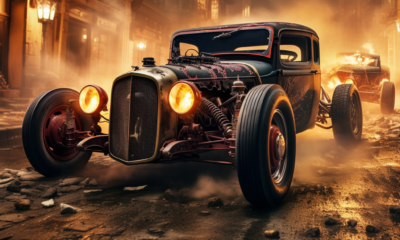
 Rat Rod History10 months ago
Rat Rod History10 months agoWhat are Rat Rods?
-
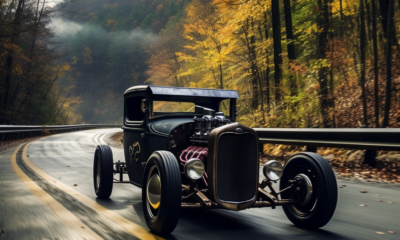
 Rat Rod Events10 months ago
Rat Rod Events10 months agoRat Rod Shows in Tennessee: A Guide
-

 Rat Rod Builds6 months ago
Rat Rod Builds6 months agoMaster Guide: How to Do a Rat Rod Paint Job Like a Pro
-
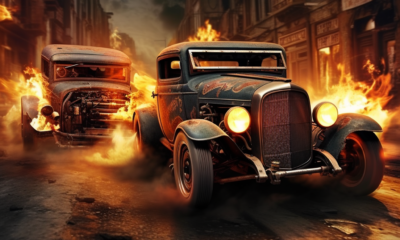
 Rat Rod Videos10 months ago
Rat Rod Videos10 months ago25 Minutes of RAT RODS: “Doomsday” Special
-
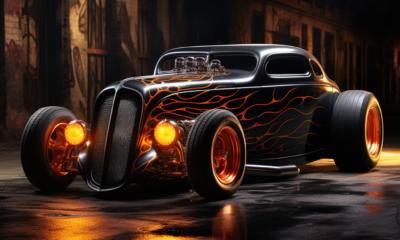
 Rat Rod History10 months ago
Rat Rod History10 months agoWhat is the difference between a hotrod and a Ratrod?
-
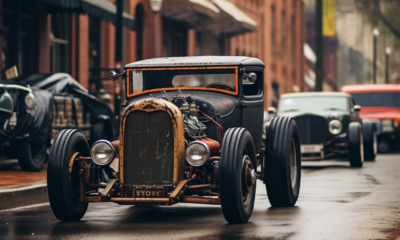
 Rat Rod Videos10 months ago
Rat Rod Videos10 months agoWorld’s 7 Incredible Rat Rods That Will Amaze You
-

 Rat Rod Builds6 months ago
Rat Rod Builds6 months agoMaster Guide: How to Make a VW Bug Rat Rod – Step by Step
-

 Rat Rod Builds6 months ago
Rat Rod Builds6 months agoMastering the Art of Making a Rat Rod Street Legal

